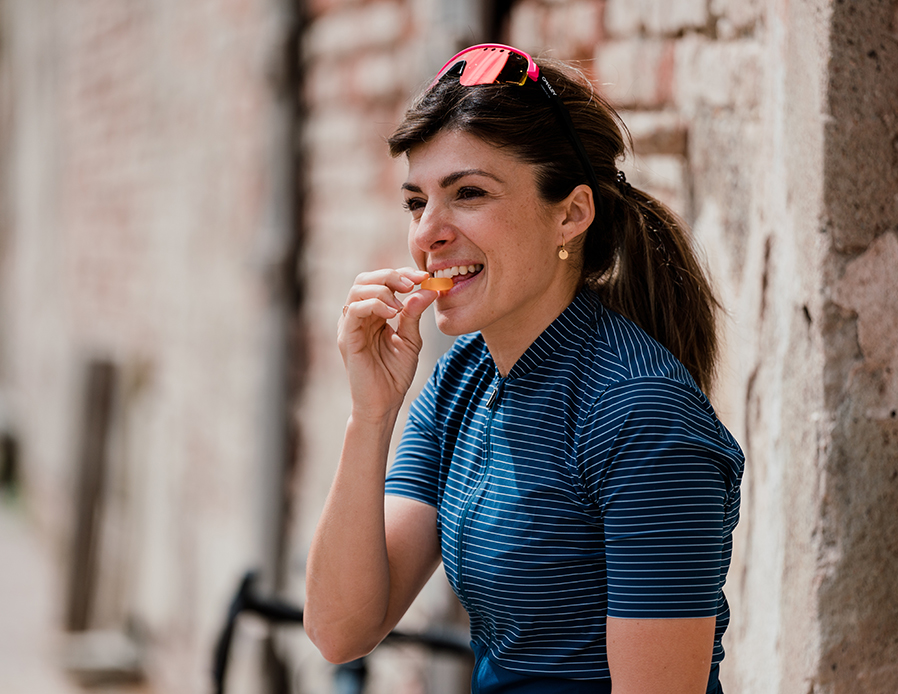
GRANFONDO: GUIDE TO NUTRITION AND SUPPLEMENTATION STRATEGY
It may seem strange at first, but what you put into your body is just as important for performance, recovery and longevity as the actual training you do. So here are some tips on how to eat in order to best prepare for a Granfondo.
The Granfondo cycling season is upon us. It's time to wear the racing number again after the winter training period, which laid the foundations of physical shape. It's time to go back to riding on the road and abandon indoor cycling. And to face this moment in the best possible way, there are some aspects to consider: the choice of bicycle, clothing, and, at the same time, the right nutrition, which is too often underestimated by bicycle lovers. If in the past it was "word of mouth" or an imitation of a champion who transmitted information about what to eat and dissolve in a bottle, today there are several increasingly accurate scientific studies that tell how to prepare for a Granfondo, how to eat as you approach the event, and how to integrate during. The nutritional program must therefore be taken into consideration just like a workout (it is no coincidence that we are talking about nutritional training); it must be programmed and personalized with great precision, starting from scientific guidelines and developing your own strategy.

What should you eat two days before the race?
Hydration is a top priority. Too often, we deal with what to eat while neglecting what and how much to drink. It is important to show up on the starting grid with an adequate state of hydration. It is essential to drink water during the day in the right amount: one glass every hour during the day when we are awake. Even better if our water bottle accompanies us throughout the day. The bottle in which we will dilute water and the same isotonic mixture that we will use in the race will also provide us with a small amount of precious carbohydrates to help saturate our energy reserves. And speaking of energy, at the table we will have to add a source of carbohydrates such as rice or pasta seasoned with extra virgin olive oil, but at the same time we should not miss out on a lean protein source such as chicken, turkey, or tofu. In this meal, we can certainly do without vegetables, but only on this day. And fruits should be consumed in small quantities until they are completely eliminated if you have already experienced abdominal tension during effort.
What should you eat for breakfast on race day?
Your glycogen stores have already been replenished in the past few days. The night, however short, will have used only a small part of these. Therefore, it will be good to feed yourself what you need without overeating breakfast with the idea of filling up on energy. A very common mistake among cyclists, who often tend to imitate the champions of stage races, this behavior, on the contrary, can only bring with it disadvantages such as the feeling of swelling, heaviness, and reduced concentration during the competition. 3–4 rusks with jam are sufficient, possibly with a food source of protein such as lean cold cuts and a hot drink such as tea or coffee according to your habits. Once you reach the starting grid, it will be the ideal time to take one of those jellies specially designed to be consumed before sport, since both the format and the sugars they contain allow for rapid emptying of the stomach and at the same time a slow release of energy that will satisfy the needs of the muscles in a progressive way. Alternatively, even a small energy bar can be fine.

What is the race integration strategy?
During the race, keep your attention high. The first hour involves a tight rhythm and maximum concentration. This moment involves a significant use of sugar. Therefore, it is important to supply them with simple gestures. An idea? To add isotonic mixtures based on carbohydrates to the bottle. In fact, it is essential to continue to take carbohydrates in the right quantity and at the right timing to prolong the endogenous reserves of energy and reduce the risk of an energy crisis. You need 60 g of carbohydrates for every hour of effort when the total duration of the effort exceeds two hours. They can be taken through an energy bar or a sport gel and should be consumed constantly every hour of the race, preferring the latter for moments of greater effort such as, for example, uphill sections.
To conclude, accept one more piece of advice: comparing yourself with friends is important, but remember to develop your integration strategy and, above all, train it on bike rides similar in intensity or duration to the Granfondo. Don't improvise. The intestine, the organ that absorbs carbohydrates and delivers them to the muscles through the bloodstream, is a highly adaptable organ, like skeletal muscles. This is why it is important to also think about nutritional training without leaving anything to chance.


.jpg)